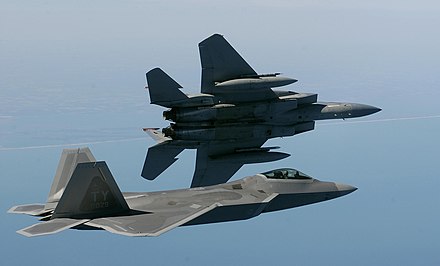
The U.S. Congress could pass legislation that will prevent the Air Force from retiring the F-22 Raptor stealth fighter jet and will require the purchase of more F-15EX Eagle II jets.

In a bid to preserve its air combat prowess, the U.S. Congress is pushing to block the Air Force’s plans to retire part of its F-22 Raptor fleet. The House Armed Services Committee has proposed an amendment to the Fiscal Year 2025 National Defense Authorization Act that would force the Air Force to keep the F-22 Raptor for longer in its inventory, as well as to buy more F-15EX Eagle II fighter jets.

Lockheed Martin, the manufacturing company, closed the Raptor’s production line in 2011 to dedicate resources to the F-35 Lightning II stealth fighter.

The proposed bill underscores the Raptor’s unrivaled capabilities in dogfighting, stealth, and thrust vectoring, which remain crucial for maintaining air dominance.

A Congressional staffer, as quoted by Defense News, highlighted the significance of the F-22, stating, “even two decades after it started entering service, the Raptor remains the best air superiority fighter in the world.”

The decision to keep the F-22 in service comes with a hefty price tag, estimated at several billion dollars. Yet, Congress deems it necessary as no other aircraft can fulfill the Raptor’s role as effectively.

Indeed, the situation is so dire that the Air Force spent five years fixing a single aircraft that was damaged during a training exercise in 2018.

As the Air Force strategizes for future combat scenarios, particularly with the rise of China’s fifth-generation fighters, it is clear that the Raptor remains integral to the nation’s air combat strategy.

The F-22’s importance is also highlighted by the Air Force’s fiscal 2025 budget request, which includes significant investment for the Raptor’s procurement and modernization.

The budget assumes the F-22 fleet will be reduced by 32 aircraft, to about 153 airplanes, but the documents say only 142 will receive the full lineup of improvements.

Budget justification documents for the F-22 say that the procurement activities over the next five years will upgrade “the air vehicle, engine, Operational Flight Program (OFP), and training systems to improve F-22 weapons, communications, navigation, pilot-vehicle interface, and electronic warfare suite.”

These improvements aim to sustain the F-22’s dominance by bolstering its sensing and tracking capabilities and preserving its first-look, first-shot, and first-kill advantages.

Despite the F-22’s formidable presence, it remains a uniquely American asset, never sold to foreign countries due to concerns over safeguarding its top-secret technologies.

And exports of military aircraft have backfired in the past. Iran is still flying the American-made F-14 Tomcats the Shah had bought before the Iranian revolution, while Communist Venezuela protects its skies with American-made F-16s it bought in the 1980s.

“However, if Congress approves the divestment there are several possibilities for the retired aircraft, including long-term storage at the AMARG,” the spokesperson said. “Until that final divestment decision is made, Air Combat Command is bringing the aircraft to Joint Base Langley-Eustis [Va.] where they will continue executing the F-22 formal training mission.”
Relevant articles:
– Why America never sold the F-22 Raptor to foreign countries, Sandboxx
– What Happens to the Air Force’s Oldest F-22s if Congress OKs Their Retirement?, Air & Space Forces Magazine
Russia Is Mad: The Stealth F-22 Raptor Fighter Won’t Be Retired Anytime Soon | The National Interest

